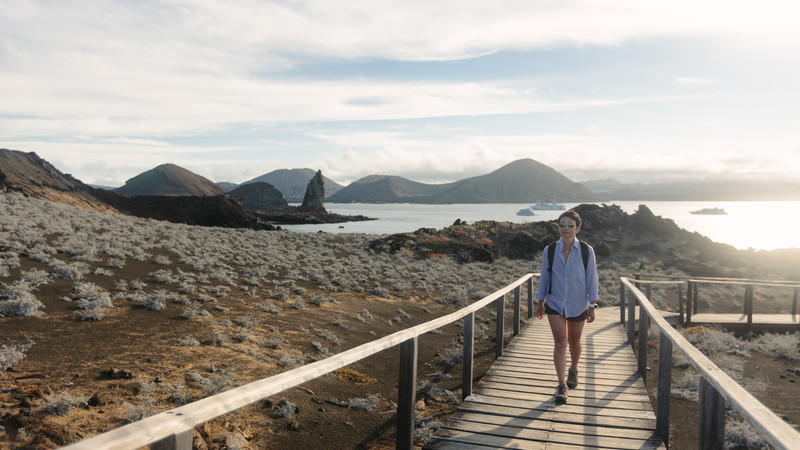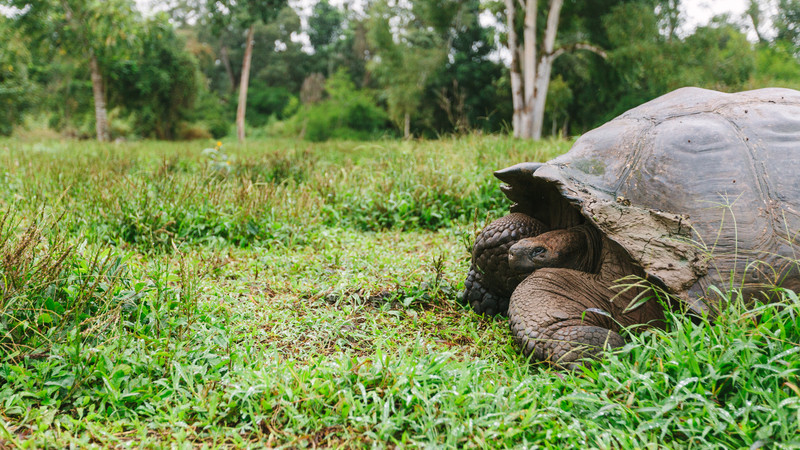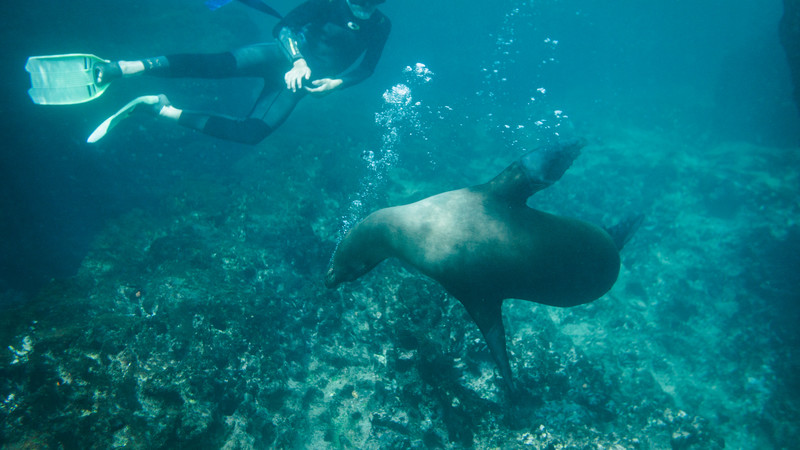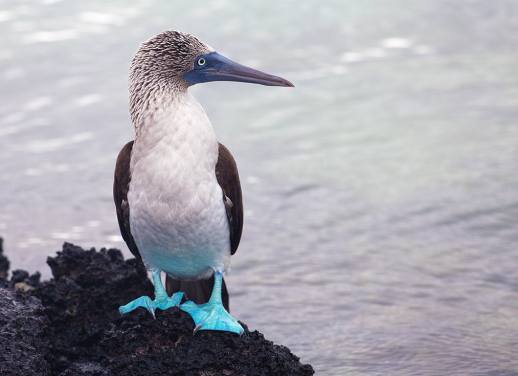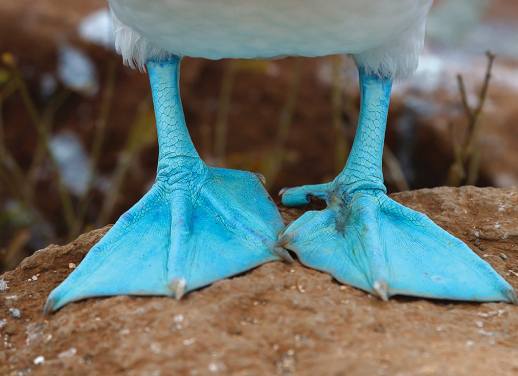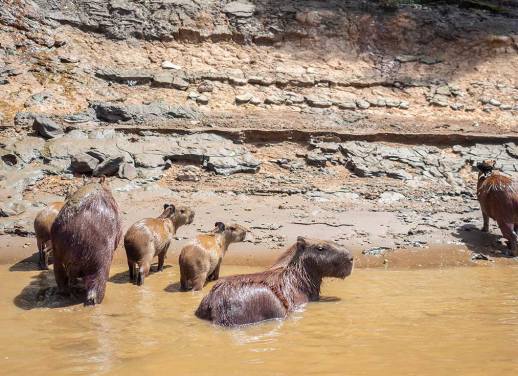The Galapagos Islands are one of the few places on earth where animals still rule the roost. Navigate past sunbathing sea lions, red and green marine iguanas and giant tortoises on Espanola Island and you can’t help but feel overcome by the sense that you shouldn’t be there. We are just spectators passing through – this is their territory.
But what makes these islands so magical is also what makes them vulnerable. A growing human population, the introduction of invasive alien species and the effects of climate change have all put these unique islands and their inhabitants at risk. It’s important that tourists (and locals alike) leave as small an ecological footprint as possible to protect this pristine natural treasure. About 97% of the Galapagos Islands are protected by national park, and within this park there are some important rules that visitors are expected to abide by.
Hire a guide
Any visit to the Galapagos National Park must be accompanied by an authorised naturalist guide. Guides are a fountain of information about the islands, their inhabitants and conservation efforts. You can’t help but fall even more in love with this fascinating volcanic archipelago under the guidance of a great one, like Oswaldo Noboa, Intrepid’s guide in the Galapagos.
Keep your distance
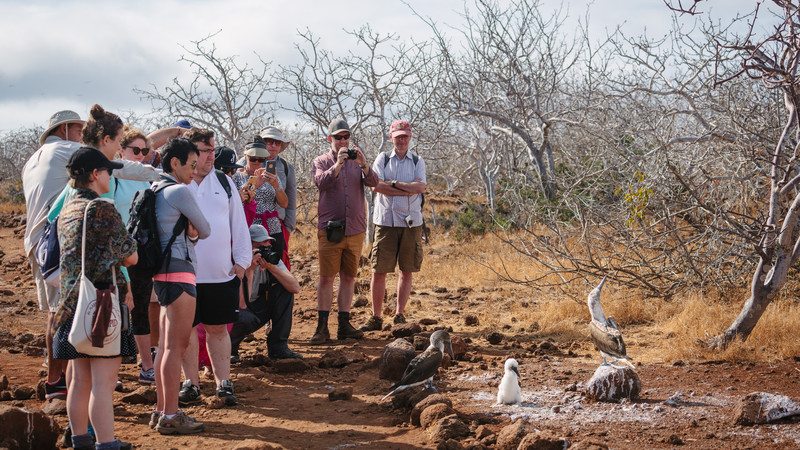 We’re all for venturing off the beaten path, but not when you’re on a Galapagos trip. Visitors are required to stay on marked trails and maintain a distance of at least two metres (six feet) from wildlife. Though they might try to approach you, never touch or feed the animals, as it can be harmful to their health.
We’re all for venturing off the beaten path, but not when you’re on a Galapagos trip. Visitors are required to stay on marked trails and maintain a distance of at least two metres (six feet) from wildlife. Though they might try to approach you, never touch or feed the animals, as it can be harmful to their health.
READ MORE: WHAT AN INTREPID TOUR IN THE GALAPAGOS REALLY LOOKS LIKE
Everything in its place
More than 200,000 travellers flock to the islands each year, and that number is growing. While it might seem harmless to take a lava rock or shell home as a souvenir, the impact on the environment could be profound. Take nothing from the islands, except photos (and make sure the flash is off so you don’t disturb the animals).
Speaking of photography…
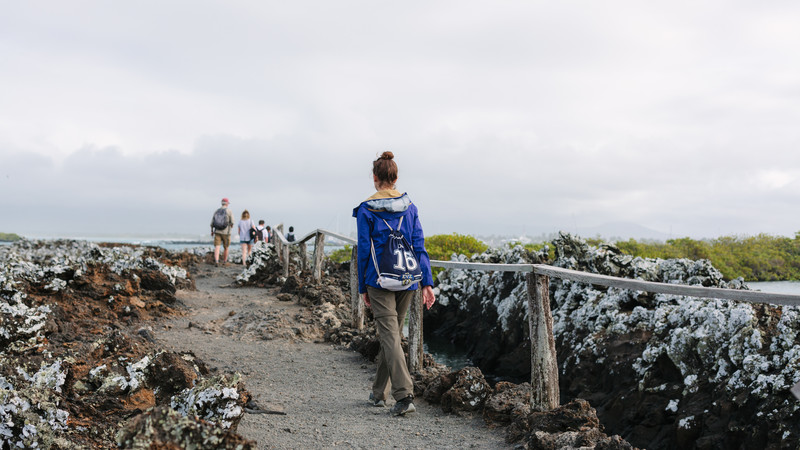 Leave your selfie sticks on the boat – they are not to be used on land. Sadly, we’ve seen quite a few travellers flout the two-metre rule with selfie sticks to get their cameras as close as possible to sea lions, tortoises and iguanas, which agitates the animals. Please don’t use your tablets to take photos either; more often than not, people hold these up to their faces as they explore, having no idea if they’re veering off the designated path, towards (or on top of) wildlife. Similarly, if you can’t see where you’re going, you’re more likely to trip and do yourself an injury. Stick with your camera or phone for happy snaps.
Leave your selfie sticks on the boat – they are not to be used on land. Sadly, we’ve seen quite a few travellers flout the two-metre rule with selfie sticks to get their cameras as close as possible to sea lions, tortoises and iguanas, which agitates the animals. Please don’t use your tablets to take photos either; more often than not, people hold these up to their faces as they explore, having no idea if they’re veering off the designated path, towards (or on top of) wildlife. Similarly, if you can’t see where you’re going, you’re more likely to trip and do yourself an injury. Stick with your camera or phone for happy snaps.
READ MORE: YOUR GALAPAGOS TRAVEL CHECKLIST
Shop responsibly
Unfortunately, there are vendors who try to profit off the sale of sea shells, black coral, tortoise shells and other species endemic to the islands. Not only is this detrimental to conservation efforts, it’s also illegal. This doesn’t mean you need to leave the Galapagos empty-handed though. A number of shops support both local products and artisans, including Lonesome George, an awesome chain that goes one step further and donates a portion of its profits towards environmental education projects.
Leave no trace
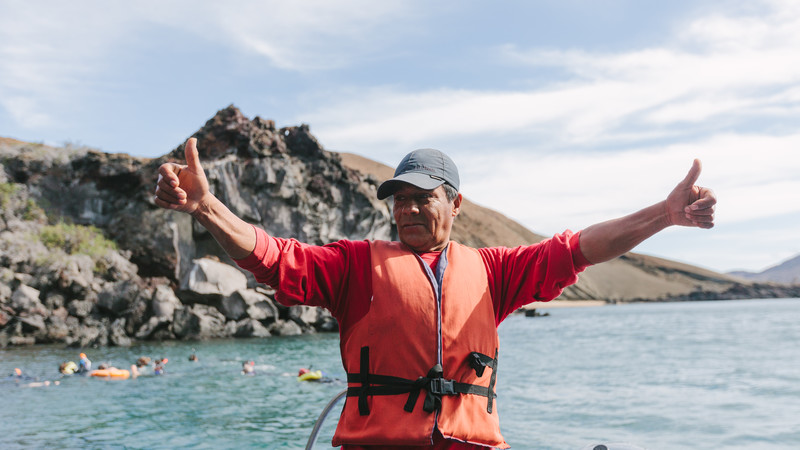 Every chocolate wrapper and plastic water bottle left on the islands interferes with the natural ecosystem and threatens wildlife. Not to mention, being a litterbug is an exceptionally bad look, and the fines for littering are HUGE. Be a responsible traveller – bring a reusable canteen rather than buy bottled water, take all rubbish with you and leave nothing behind but your footprints.
Every chocolate wrapper and plastic water bottle left on the islands interferes with the natural ecosystem and threatens wildlife. Not to mention, being a litterbug is an exceptionally bad look, and the fines for littering are HUGE. Be a responsible traveller – bring a reusable canteen rather than buy bottled water, take all rubbish with you and leave nothing behind but your footprints.
Snack decisions
If you’re like me and get peckish every couple of hours, you might need snacks to fuel your Galapagos exploration. As the islands are incredibly susceptible to foreign species, some guides have strict no-food policies. A simple fly (Philornis downsi) native to Trinidad and Brazil, for instance, is believed to be responsible for endangering a number of bird species, including Darwin’s iconic finches. Others do allow food, but with severe restrictions. All seeds are banned, as well as many fruits and vegetables. This might be the only time we advocate sticking to processed foods, like cookies and muesli bars, to get you through your mid-hike hunger pangs.
 No smoking
No smoking
If you’re a smoker, your trip to the Galapagos might be a good time to try and kick your habit, as smoking is not allowed within the Galapagos National Park (so practically everywhere). Neither is lighting a campfire.
READ MORE: YOUR ESSENTIAL GALAPAGOS ISLANDS PACKING LIST
 Here’s a tip…
Here’s a tip…
Everyone knows about the amazing animals that reside on the Galapagos Islands, but few talk about the locals who live there. With the incredible Galapagos as their backyard, most can’t help but be passionate about conservation. Many are employed in tourism and rely on tips to supplement their income. If you’re happy with the service you receive on your Galapagos adventure, don’t forget to reward these integral people.
Experience the incredible beauty of the Galapagos Islands on an Intrepid small group adventure now.
All images by Mirae Campbell.

